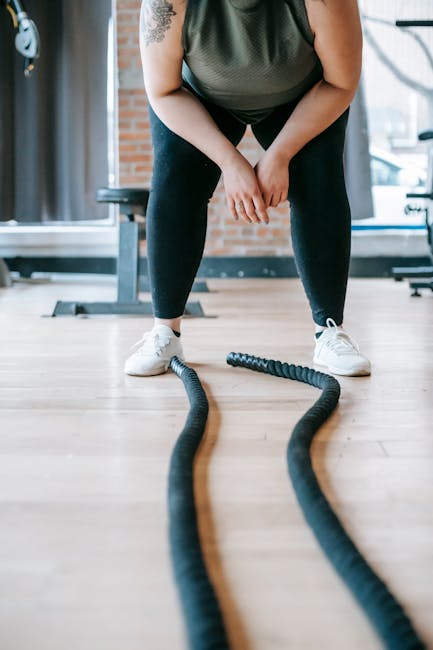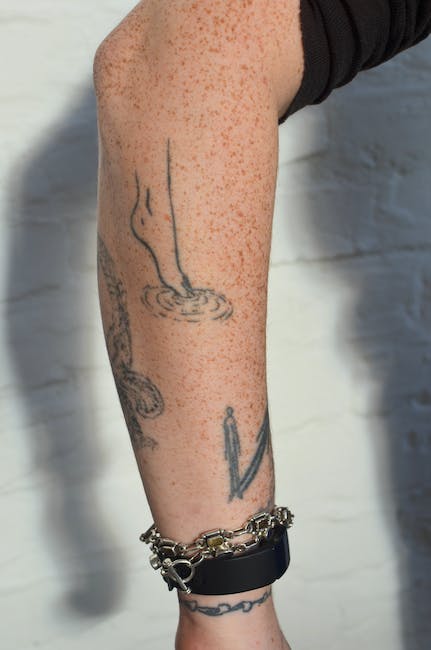Are you the type of person who likes to feel the burn? Do you break into a smile at the thought of lifting weights? Well, we hate to be the bearer of bad news, but your love affair with pumping iron may be causing more harm than good. Brace yourself, because we’re about to delve into the world of elbow tendonitis and how your weight lifting exploits may be contributing to the discomfort in your arms. Don’t worry, we’ll try to make this as painless as possible – pun intended.
Contents
- 1 1. The Impact of Weight Lifting on Elbow Tendonitis
- 2 2. Understanding the Mechanics of Elbow Tendonitis Caused by Weight Lifting
- 3 3. Examining the Risk Factors for Elbow Tendonitis in Weight Lifters
- 4 4. Prevention and Management Strategies for Elbow Tendonitis in Weight Lifting
- 5 5. Seeking Professional Help for Elbow Tendonitis Caused by Weight Lifting
- 6 Say Goodbye to Elbow Tendonitis and Pump Iron Like a Pro!
1. The Impact of Weight Lifting on Elbow Tendonitis
Effects of weightlifting on elbow tendonitis
So, you’ve hit the gym, lifted some weights, and now you’ve got elbow tendonitis. Congratulations, you’ve made it to the big leagues. But, fear not, dear reader, for weightlifting can actually have a positive effect on your elbow tendonitis.
Firstly, resistance training with weights can increase the strength and thickness of tendons, which can lead to a decrease in the likelihood of developing tendinitis. Additionally, weightlifting helps promote blood flow to the affected area, which can assist in the healing process.
But, as with any exercise, there are potential risks. Heavy lifting and poor technique can contribute to tendonitis, so it’s important to start with lighter weights and perfect your form before going too heavy. Remember, slow and steady wins the race (and saves your elbows).
To summarize, weightlifting can both aggravate and improve elbow tendonitis. It’s all about how you use it. With proper form and moderate weights, you can strengthen your tendons and speed up recovery. Go forth and lift, but be sure to take care of those joints.
2. Understanding the Mechanics of Elbow Tendonitis Caused by Weight Lifting
For those of us who love to pump iron, weight lifting isn’t just a hobby, it’s a lifestyle. But with great power comes great responsibility – namely, the responsibility to avoid elbow tendonitis at all costs.
So, what exactly is elbow tendonitis? Put simply, it’s inflammation of the tendons that attach your forearm muscles to your elbow bone. Ouch. And what causes it? Well, a few things, but we’re here to talk about how weight lifting can contribute to the problem.
First of all, let’s talk about form. If you’re not using proper form when performing exercises like bicep curls or tricep extensions, you’re putting unnecessary strain on your elbow joint and tendons. Make sure you’re using a weight that you can handle with good form, and if you’re not sure what that weight is, ask a personal trainer for help (or, you know, just guess and hope for the best).
3. Examining the Risk Factors for Elbow Tendonitis in Weight Lifters
So, you want to know what risk factors contribute to elbow tendonitis in weight lifters? Don’t worry, we got you covered. But first, let’s take a moment to appreciate the irony in weight lifters using their elbows to lift weights, causing strain on their tendons. It’s like rock climbers complaining about their fingers hurting from holding on too tight.
- One major risk factor is overuse and improper technique. You know that guy at the gym who’s grunting and slamming weights down like it’s his job? Yeah, don’t be him. Lift with proper form and give your body a chance to recover.
- Another contributing factor is muscle imbalances. If you only focus on certain muscle groups and neglect their opposing muscles, you’re creating potential problems for your tendons. So, make sure to balance out your workouts and show all your muscles some love.
Lastly, let’s talk about ego. We all know that one person who tries to lift beyond their limits and ends up injuring themselves. Don’t be that person. It’s not worth sacrificing your health for a temporary boost in your ego. Leave your pride at the door and only lift weights that are suitable for your current strength level.
There you have it, folks. Examining the risk factors for elbow tendonitis in weight lifters isn’t rocket science, but it does require some common sense and self-awareness. Now go forth and lift with caution and good judgment!
4. Prevention and Management Strategies for Elbow Tendonitis in Weight Lifting
So, you’ve decided to take up weight lifting to bulk up those muscles—the only problem is that you’ve been hit with the dreaded elbow tendonitis. Don’t despair, my friend. With the right prevention and management strategies, you can stay on the gain train without having to suffer unbearable pain.
Here are some tips to get you on the track to healing:
- Warm-up and stretch: Before starting your weight lifting session, make sure you warm up your muscles by doing some light cardio and stretching. This will get your blood flowing and prevent injury.
- Don’t push yourself too hard: Listen to your body! If you start feeling pain or discomfort, it’s time to take a break or lower your weights. Overexerting yourself will only aggravate your condition. And let’s be real, what’s the point of trying to lift something that’s way too heavy for you anyway?
- Ice, ice baby: If you do experience swelling or pain in your elbow, apply ice to the area to reduce inflammation. And if you’re feeling daring, try submerging your arm in an ice bath and feel the pain fade away—just like your dreams of ever being able to eat ice cream again.
Remember, it’s better to take it easy and allow your elbow tendonitis to heal than to push yourself too hard and end up with a more severe and long-lasting injury. Take care of your body and it will take care of you.
5. Seeking Professional Help for Elbow Tendonitis Caused by Weight Lifting
So, you’re finally ready to admit it. Your elbow tendonitis is out of control. You’ve tried icing it, resting it, and even bribing it with a massage and a fancy dinner. But, alas, your tight-fisted elbow won’t budge. It seems your weightlifting regimen has caught up to you, and now your arm resembles a wilted noodle.
But fear not, my gym-rat friend! There is help out there for those looking to reclaim their former bicep-popping glory. Below are some professional avenues to explore for relief:
- Physical Therapy: A licensed physical therapist can help pinpoint the root cause of your tendonitis and create a tailored treatment plan to alleviate your pain. They may also suggest exercises to strengthen surrounding muscles to prevent future injury.
- Acupuncture: If needles don’t scare you, acupuncture can be a helpful tool in reducing inflammation and relieving pain. Plus, you can impress your workout buddies with your newfound tiny needle skillz.
- Massage Therapy: Sometimes, a deep tissue massage is just what the doctor ordered. A licensed massage therapist can work out those pesky knots in your elbow and help loosen up any tight muscles.
No matter which professional route you choose, the important thing is to take care of your body and listen to its cues. And, if all else fails, maybe it’s time to switch up your workout routine. I hear line dancing is all the rage these days.
Say Goodbye to Elbow Tendonitis and Pump Iron Like a Pro!
Well, folks, we’ve explored the ugly truth behind weight lifting and elbow tendonitis. But fear not, dear reader! Just because you have tendonitis doesn’t mean you have to give up weight lifting altogether.
Instead, take it slow and steady. Warm up properly before each session, and don’t overdo it. Remember, it’s not a competition – it’s about taking care of your body!
So, hit the gym with confidence, knowing that you have the tools to prevent elbow tendonitis from ruining your workout routine. And if anyone asks, just flex your biceps and say: “Sorry, can’t hear you over the sound of these gains!








Leave A Comment